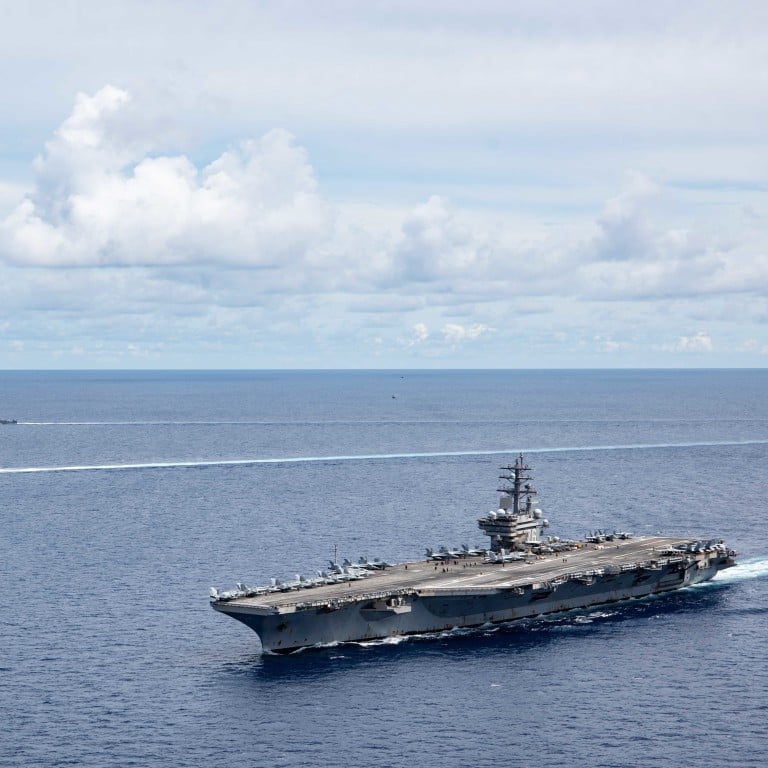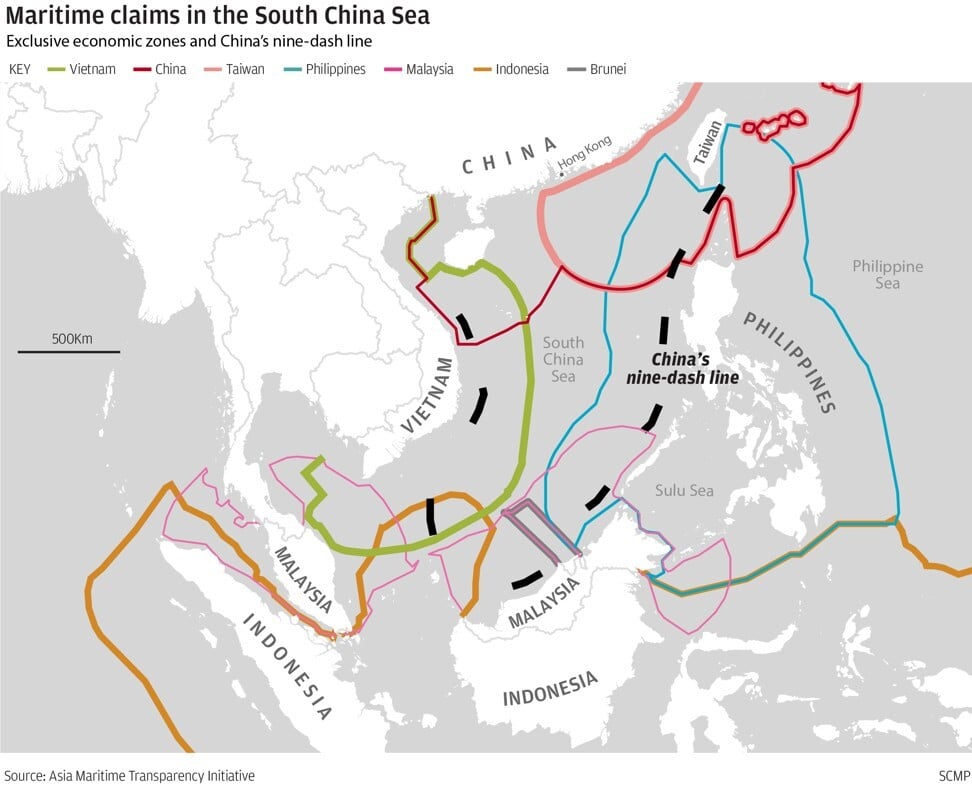
Explainer | US aircraft carriers in the South China Sea and why they anger Beijing
- USS Ronald Reagan has conducted operations in the sea for the third time in 2020
- The disputed waters have become a flashpoint for the intensifying US-China rivalry, raising concerns about the potential for a military clash
What happened?
The carrier strike group carried out flight operations, maritime strike exercises and tactical training.
Rear Admiral George Wikoff, commander of the carrier strike group, said in a statement that the operations focused on “cooperation alongside our Indo-Pacific allies and partners in promoting regional stability”.
“Throughout our deployment, we continue our long tradition demonstrating the United States’ commitment to the lawful use of the seas and maintaining open access to the international commons,” he said.
Why does it matter?
Beijing claims most of the resource-rich South China Sea, but its claims overlap with those of several other nations in the region and it has been criticised for building military facilities on disputed islands and reefs. It has frequently objected to US exercises and operations in the South China Sea, claiming that Washington has carried out navigational hegemony and driven militarisation of the waterway by sending warships into the region.
Washington has accused China of “reckless and provocative militarisation” of outposts in the sea and engaging in a “campaign of bullying” against smaller regional powers.
South China Sea: the dispute that could start a military conflict
What is the US doing in the South China Sea?
- The deployment of the USS Ronald Reagan “in support of a free and open Indo-Pacific” followed two previous such operations this year. In July, two carrier groups, led by the USS Ronald Reagan and the USS Nimitz, conducted air defence exercises in the South China Sea, coinciding with Chinese military exercises in the waters. In August, the USS Ronald Reagan conducted flight operations and high-end maritime stability operations there.
- The carrier has conducted what the US Navy described as “security and stability operations” as the US has stepped up its presence in the sea, including eight “freedom of navigation” operations to safeguard open access to the waterway so far this year.
- Besides the US, other nations such as France, Britain, Japan, Canada and Australia have conducted what they classed as freedom of navigation operations in the South China Sea. The US has also cooperated with navies from other countries, including holding trilateral military exercises in the disputed waters with Australia and Japan in July.
What has Beijing said about US military presence?
When the carrier strike group sailed into the South China Sea previously, the Chinese military urged the US to “stop its provocative military acts” and accused it of trying to “drive a wedge between countries in the region”.
China has said the South China Sea is one of its core interests that it would readily defend, while the US has stressed that it would stand up for its partners in Southeast Asia, including the Philippines, with which it is co-signatory of the 1951 Mutual Defence Treaty.

02:32
Washington’s hardened position on Beijing’s claims in South China Sea heightens US-China tensions
What could happen next in the South China Sea?
As the strategic rivalry between Beijing and Washington has intensified, the US has taken a harder line.
- In July, it denounced China’s “illegal” claims in the South China Sea, backing a 2016 international tribunal ruling that most of Beijing’s claims there had no legal basis – a verdict Beijing vowed to ignore.
- In August, the US slapped visa restrictions on Chinese individuals deemed responsible for land reclamation or militarisation of features in the sea. It also blacklisted 24 Chinese state-owned companies, including five subsidiaries of the engineering giant China Communications Construction Company, which the US said had “led the destructive dredging” of Chinese-controlled outposts in the waters.
Growing tensions between China and the US have raised concerns of a potential flare-up in the South China Sea, including from accidents or miscalculations escalating into military conflict. Experts have said that the risk of military confrontation between the countries has increased but that both sides still had little appetite to fight a war.


